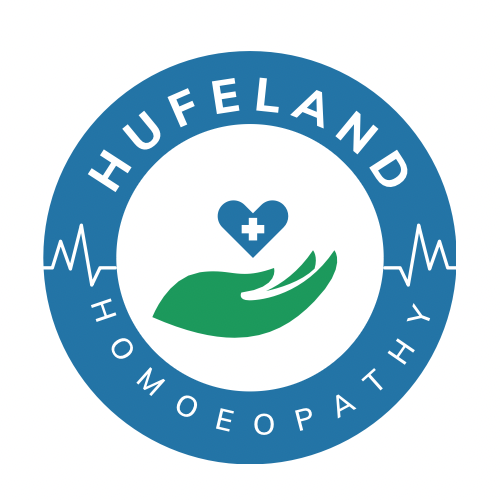- Fathima Roshni N

- Dec 30, 2024
- 4 min read
Updated: Jan 4
Varicella, commonly known as chickenpox, is a highly contagious viral infection that mainly affects children, but adults can contract it too. This guide aims to provide a clear understanding of varicella from both medical and homeopathic perspectives. We will explore its causes, symptoms, pathophysiology, prevention strategies, diagnosis, treatment options, and homeopathic remedies, helping patients and healthcare professionals alike.
Pathophysiology
Varicella is caused by the varicella-zoster virus (VZV), a member of the herpesvirus family. Upon initial infection, the virus resides in the mucosal tissue and spreads to neighboring lymph nodes. This can lead to viremia, where the virus enters the bloodstream, typically within 10 to 21 days. During this time, the person infected may not show any symptoms.
Once the virus replicates sufficiently, it travels to the skin and results in the wel-known vesicular rash. It's important to note that VZV can also remain dormant in the body. Later in life, it may reactivate, leading to herpes zoster, commonly known as shingles. According to the CDC, nearly 1 in 3 people will develop shingles in their lifetime.
Causes
Varicella is primarily transmitted through respiratory droplets released when an infected person coughs or sneezes. It can also be spread through direct contact with fluid from the lesions of someone infected. Individuals who have never had chickenpox or received the varicella vaccine are at a significantly higher risk. In fact, the CDC reports that about 90% of people who are not immune and are exposed to someone with chickenpox will get the disease.
Symptoms
The initial symptoms of varicella may include:
Fever
Fatigue
Loss of appetite
Headaches
These symptoms typically appear 1 to 2 days before the onset of the rash. The rash usually starts as red spots that quickly develop into itchy, fluid-filled blisters. Over the course of about 5 to 10 days, these blisters will break and scab over.
Types
Varicella has two primary presentations:
Classic Varicella: This is the typical form of chickenpox, identified by a widespread vesicular rash, systemic symptoms, and a generally self-limiting course.
Atypical Varicella: This form is usually seen in vaccinated individuals, exhibiting milder symptoms and fewer lesions.
Severe complications can arise, particularly in immunocompromised individuals, pregnant women, and newborns. For instance, studies show that around 15% of adults with chickenpox develop complications, such as pneumonia.
Prevention
Vaccination is the most effective approach to prevent varicella. The varicella vaccine is given in two doses, starting around 12 to 15 months of age. Not only does it safeguard children, but it is also beneficial for unvaccinated adults. According to the CDC, since the vaccination program began in 1995, varicella incidence has decreased by over 90% in the United States.
In addition to vaccination, practicing good hygiene and avoiding close contact with infected individuals can help further minimize the risk of spreading the virus.
Diagnosis
Diagnosing varicella largely relies on clinical evaluation. Healthcare providers look for the characteristic rash and accompanying symptoms. In atypical cases or among vaccinated individuals, laboratory tests like PCR or serological tests may be needed for confirmation.
Treatment
The treatment for varicella focuses on relieving symptoms and avoiding complications. Commonly used options include:
Antihistamines: Help reduce itching.
Acetaminophen: Used to lower fever and manage pain.
Antiviral medications: Such as acyclovir, are recommended for severe cases, particularly in high-risk patients.
It is crucial to avoid aspirin due to the risk of Reye’s syndrome in children. Statistics suggest that children who receive aspirin during a viral infection are at a 30% risk of developing this potentially fatal condition.
Homeopathic Management
Homeopathy offers several remedies aimed at managing symptoms related to varicella. Here are some common homeopathic options:
Arsenicum Album: Helpful for restlessness and anxiety that can accompany fever.
Belladonna: Suitable for intense fever with a flushed face and sensitivity to light.
Hepar Sulphuris: Indicated for painful, swollen sores that may become infected.
Rhus Toxicodendron: Effective for reducing itching and blistering associated with the rash.
Apis Mellifica: Beneficial for swollen, itchy blisters resembling bee stings.
Alternative remedies like Caladium and Natrum Muriaticum can target more severe symptoms and associated fatigue and headaches.
Final Thoughts
Varicella is often self-limiting but can lead to serious health complications, especially among vulnerable groups. A solid understanding of both medical and homeopathic management can greatly improve recovery experience and empower informed decision-making in preventive care.
Both healthcare professionals and patients should prioritize vaccination and symptom management while remaining open to complementary treatments such as homeopathy. A comprehensive approach to varicella can enhance the overall quality of patient care and promote a smoother recovery process.
Disclaimer for Homeopathic Treatment
The information provided regarding homeopathic treatment is for educational purposes only and should not be considered as medical advice. It is important to consult a qualified healthcare professional before starting any homeopathic treatment or making changes to your current health regimen.
Key Points to Consider:
Consultation Required: Always seek the advice of a licensed practitioner for any health concerns or conditions.
Individual Responses: Homeopathic treatments may vary in effectiveness from person to person.
By using homeopathic treatments, you acknowledge that you understand the above points and agree to consult with a healthcare provider for appropriate guidance.



Comments